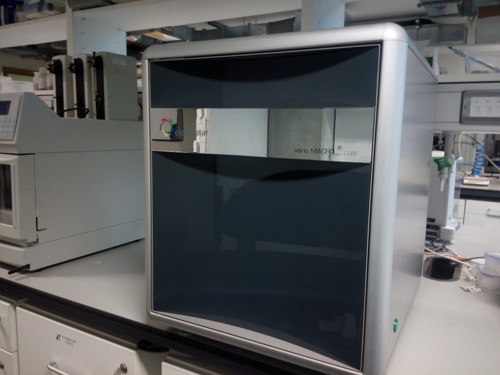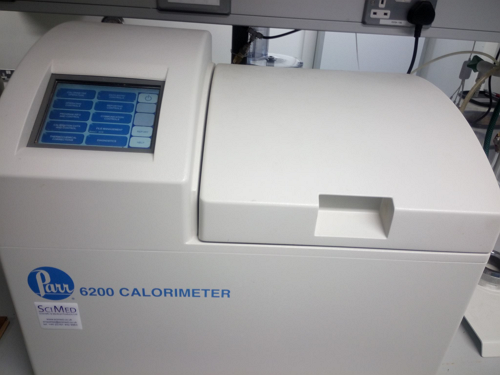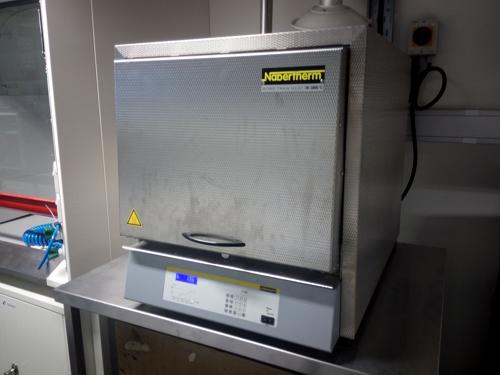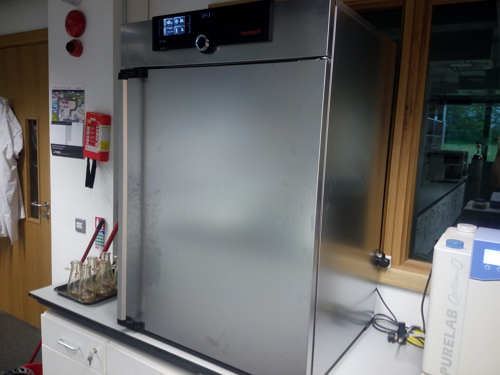Gross Calorific Value

The gross calorific value (often referred to as the higher heating value (HHV), gross energy or upper heating value) is determined by bringing all the products of the combustion of a sample back to the original pre-combustion temperature, condensing any vapour produced. The gross calorific value takes into account the latent heat of vaporization of water in the combustion products, and is useful in calculating heating values for fuels where condensation of the reaction products is practical.
We determine the gross calorific value according to the procedures outlined in European Standard EN 14918:2009 ("Solid biofuels. Determination of calorific value") and we use a Parr 6200 bomb calorimeter which has been specifically designed to satisfy the requirements of this method.
The determination of the gross calorific value requires a correction based on the sulphur content of the sample.
We report the gross calorific value on a dry-mass basis as well as on an as-received basis and a dry ash-free basis (providing that the ash content and as-received moisture content of the sample have also been determined).
We calculate the Net Calorific Value (often referred to as the Lower Heating Value, LHV) from the Gross Calorific Value and the elemental (ultimate) analysis of the sample.
Click here to place an order for determining Gross Calorific Value.
Analysis Packages for Gross Calorific Value
The Celignis Analysis Package(s) that determine this constituent are listed below:
P34 Calorific Value and Elements |
|---|
| Gross Calorific Value, Net Calorific Value, Ash, Carbon, Hydrogen, Nitrogen, Sulphur, Oxygen |
P40 Combustion Package |
|---|
| Volatile Matter, Fixed Carbon, Moisture, Ash, Carbon, Hydrogen, Nitrogen, Sulphur, Oxygen, Gross Calorific Value, Net Calorific Value, Chlorine |
Equipment Used for Gross Calorific Value Analysis

| Elemental Analyser A Vario MACRO cube elemental analyser is used for the quantification of the Carbon, Hydrogen, Nitrogen, and Sulphur content of samples. |

| Bomb Calorimeter We use a Parr 6200 bomb calorimeter to determine the gross and net calorific value (higher and lower heating value) of samples. |

| Muffle Furnace A Nabertherm furnace is used for the determination of the ash content of samples and also in the analytical protocol for determining Klason lignin content. |

|
Moisture Oven
We use a Memmert UF260 oven to determine moisture content according to standard EN methods of analysis. |
Additional Material
We can determine the Gross Calorific Value content of biomass, click here to learn more about our various biomass analysis methods.





